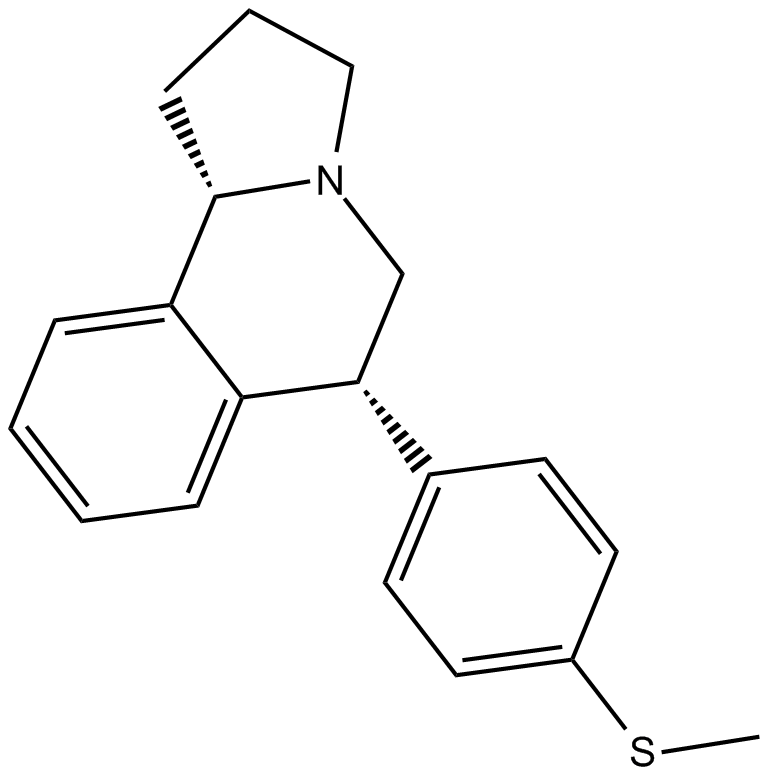(±)-McN 5652 |
| Catalog No.GC16735 |
5-HT uptake inhibitor
Products are for research use only. Not for human use. We do not sell to patients.

Cas No.: 96795-89-0
Sample solution is provided at 25 µL, 10mM.
(±)-McN 5652 is a highly potent inhibitor of serotonin (5-HT, 5-hydroxytryptamine) uptake with a Ki value of approximately 0.6 nM in rat brain synaptosomes in vitro and an ED50 value of approximately 2 mg/kg p.o. ex vivo [1].
5-HT is a monoaminergic neurotransmitter to modulate numerous sensory, behavioural processes and motor in the mammalian nervous system [2]. There are at least three main groups of 5-HT receptor: 5-HT1, 5-HT2, and 5-HT3. Each group is not only structurally but also operationally distinct. Each receptor group has its own distinct transduction system. 5-HT4 is the more recently identified receptor. It almost represents a fourth 5-HT receptor class [3].
Receptor binding experiments indicated that McN-5652 has a weak affinity for serotonin 5-HT2 receptor (apparent Ki approximately 200 nM) and a very low affinity for serotonin 5-HT1 receptor [1].
In vivo, McN-5652 was required in low doses to potentiate the serotonin syndrome in rats. For this serotonin syndrome, the ED50 value was 1.5 mg/kg 2 hr after p.o. dosing. To potentiate head twitches which were induced by L-5-hydroxytryptophan (L-5HTP) in mice, the ED50 value is just 0.4 mg/kg 2 hr after p.o. dosing. That means McN-5652 is of high potency as a serotonin uptake inhibitor [1].
References:
[1]. Shank RP, Vaught JL, Pelley KA, et al. McN-5652: a highly potent inhibitor of serotonin uptake. J Pharmacol Exp Ther, 1988, 247(3):1032-8.
[2]. Tecott LH, Sun LM, Akana SF, et al. Eating disorder and epilepsy in mice lacking 5-HT2c serotonin receptors. Nature, 1995, 374(6522):542-6.
[3]. Hoyer D, Clarke DE, Fozard JR, et al. International Union of Pharmacology classification of receptors for 5-hydroxytryptamine (Serotonin). Pharmacol Rev, 1994, 46(2):157-203.
Average Rating: 5 (Based on Reviews and 29 reference(s) in Google Scholar.)
GLPBIO products are for RESEARCH USE ONLY. Please make sure your review or question is research based.
Required fields are marked with *




















